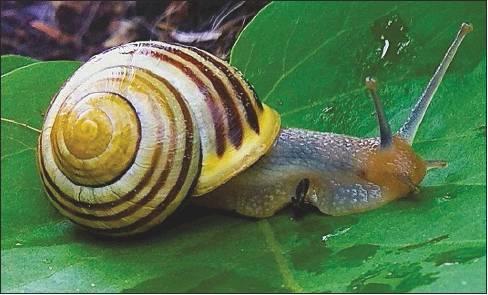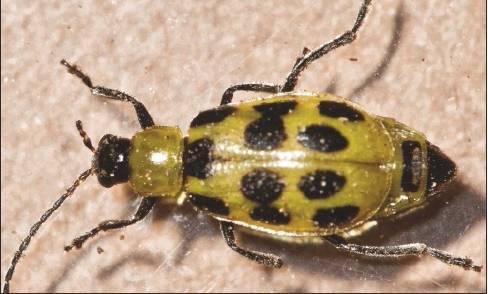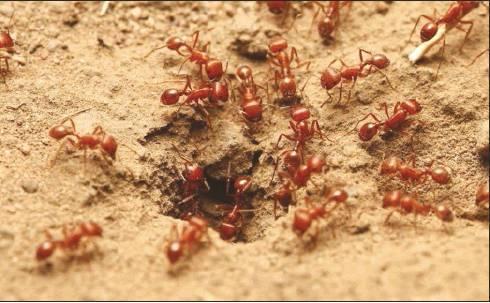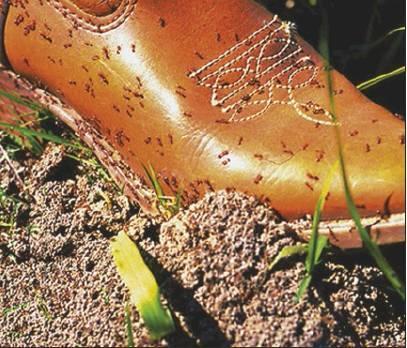What Else Bugs You?
During summer, when plants are doing all they can just to survive our little to no rain and triple digit temperatures, the incidence of pest sightings goes up, it is unquestionably inevitable. In reality, many famished and often damaging creatures have been lurking in the soil or under leaves, quietly hiding out, waiting for just the right time to make an appearance in your yard or garden. Chances are that by the time a pest infestation has made its public appearance, trying to get a handle on the situation becomes too overwhelming of a task, or the plant has taken on too much damage to thrive.
It is important to take preventative measures to ensure that your plants live a long, healthy and productive life. That is why, last week in this space, I started to talk about some of the garden pests that are so much a part of a good old Texas summertime. If you need help with Aphids, Caterpillars, Fleas, Chinch Bugs, Grubs, or Spider mites in your garden then last week’s article was for you! However, if Snails and Slugs, Beetles, Mosquitos, or Fire Ants are giving you fits, then this week’s installment may offer some help.
First off, I want to address the issue of fire ants. We all have them and we all want to get rid of them. But that really isn’t really very likely, at least not in the long term. You see, even if you do a great job and successfully rid your property of fire ants they are likely to return. This is often because while you worked hard to eliminate them your neighbors probably didn’t!
Fire ant colonies include a queen (or queens), winged males and females, workers, and brood. Colonies can create mounds up to 18 inches tall. Fire ants prefer open, sunny areas such as lawns, pastures, and parks. They are most prevalent in spring and fall. Fire ants do not injure turf grass, but their mounds can become unsightly.
The best way to get rid of them is to carefully pour a large pot (about 3 gallons) of boiling water on each mound. This will kill a mound about 60 percent of the time and works best after a rain. Also, introduce nematodes, applying them to moist soil, at dusk. Choose baits over contact products. Baits are safer to use because they are ant-specific and formulated with very small percentages of the active ingredients. Make sure to use fresh bait, and to apply it when the ants are foraging. Finally, try to organize your neighbors to treat fire ants at the same time, to avoid driving the ants from yard to yard.
Mosquitoes are more easily controlled than fire ants but are still a big problem. Adult mosquitoes are small, long-legged ›ies with two scaly wings and long, segmented antennae. They have long piercing and sucking mouthparts and they lay their eggs in still water – a clue to controlling them. Mosquitoes are found in Texas yearround but become more prevalent in spring and summer. They are most active between dusk and dawn.
Eliminate breeding sites by reducing the amount of standing water in your yard. Use bacterial larvicide tablets to reduce mosquitoes in rain barrels or in permanent bodies of water.
Pop a few wine corks into bird bath water – the wind will move the corks keeping the water from becoming still. You might try lighting citronella candles to provide short-term relief in patios and other outside areas. Wear light-colored, loose-fitting clothing when outside. If you opt to use mosquito repellents, apply them to clothing and exposed skin according to the instructions on the label. Once indoors, wash any treated skin with soap and water.
Snails and slugs have ›eshy, soft, slimy, legless bodies (1/2 to 4” long). They range in color from whitish yellow to black. They are slow-moving and require moisture for survival. Snails have a hard, spiral shell on their backs that provides protection from predators and during periods of excessive heat and dryness.
Both snails and slugs attack the leaves, ›owers, and stems of plants. They can completely devour young vegetable seedlings overnight. Believe me, I’ve had it happen.
How do you deal with them? Handpick snails and slugs at night when they are active, and drop them in a jar of soapy water. Attract snails overnight to a hollowed-out melon rind or a shallow container filled with beer or apple cider. Dispose of them in the early morning and be sure to replenish the bait often. Destroy snail and slug eggs, which look like crystal beads and are often found in large clusters under rocks and debris. Eradicate their hiding places, such as under ›owerpots and landscape timbers. Place barriers of copper stripping around planters to prevent snails and slugs from reaching the plants. I use window-screen material or row covers to protect seedlings now – I don’t want to lose them to these pests ever again. Finally, and only if significant plant damage begins to appear, you can use snail and slug baits, as a last resort.
Beetles are bad some years and not too bad others. The two most common pest beetles are the ›ea beetle and the cucumber beetle. There are several types of beneficial beetles, which feed on caterpillars, aphids, and other pests. Helpful beetles include the ground beetle and the ladybird beetle, or what we call the ladybug.
The ›ea beetle attacks many vegetables, including cucumbers, tomatoes, peppers, and eggplant. Their larvae feed underground on roots. Flea beetles create a “shotgun” pattern of feeding damage on leaves and may also spread diseases such as potato blight and bacterial wilt.
The cucumber beetle attacks all members of the squash and cucumber family. They cause minimal feeding damage, but they spread diseases, such as bacterial wilt and squash mosaic virus, that can kill plants.
Over the years I have come to understand that I can’t get rid of beetles, only control them. Choose disease-resistant varieties of squash, such as “cougar,” “sunglo,” and “sunray,” and irrigate efficiently. Use trellises to get your plants off the ground and mulch heavily around the plants. Be quick to remove dead plant materials and debris from your garden and treat the soil with beneficial nematodes.
Please remember that there are helpful as well as harmful beetles in the yard and garden, so we don’t want to just use a pesticide that kills all beetles indiscriminately. Let’s face it, in years gone by many of us would just apply pesticides willy-nilly, not ever reading the labels. Just point, spray, and kill! Over the years we have seen this practice lead to damage in the environment, in pets, and even in people. Do yourself and everyone else a favor and use pesticides sparingly and ALWAYS READ THE LABEL!
Are your squash plants suddenly struggling? It could be the work of a squash vine borer, another garden terrorist that can be a real problem in a Texas vegetable garden. I will be dedicating the full article next week to this fiend so be sure to check back then.






